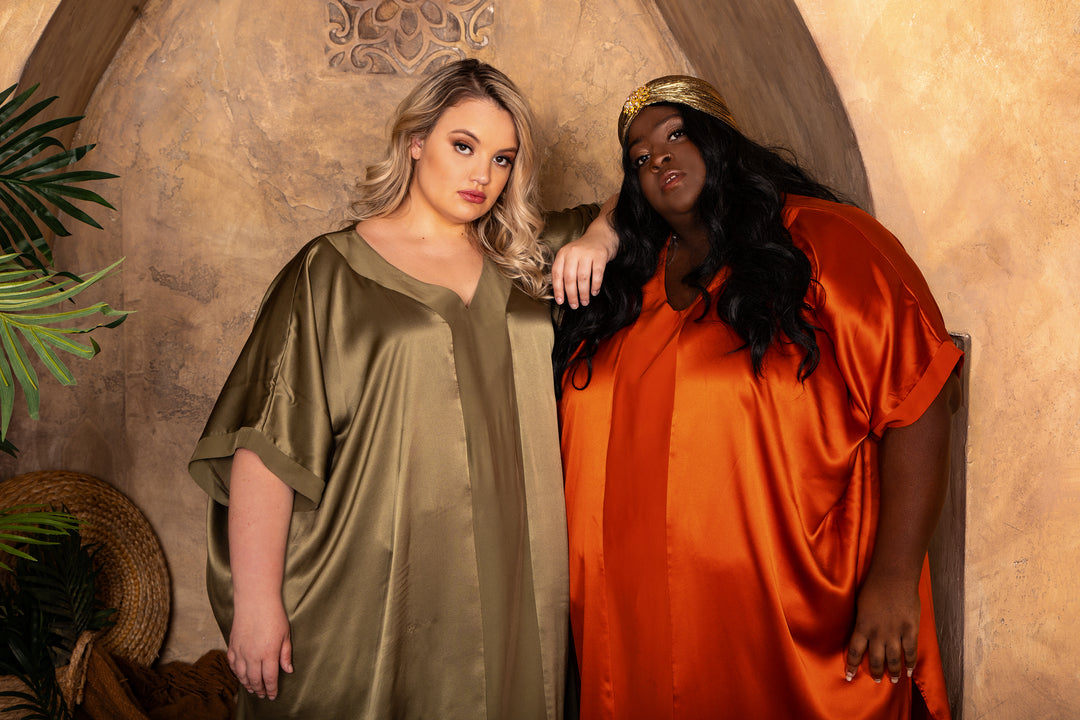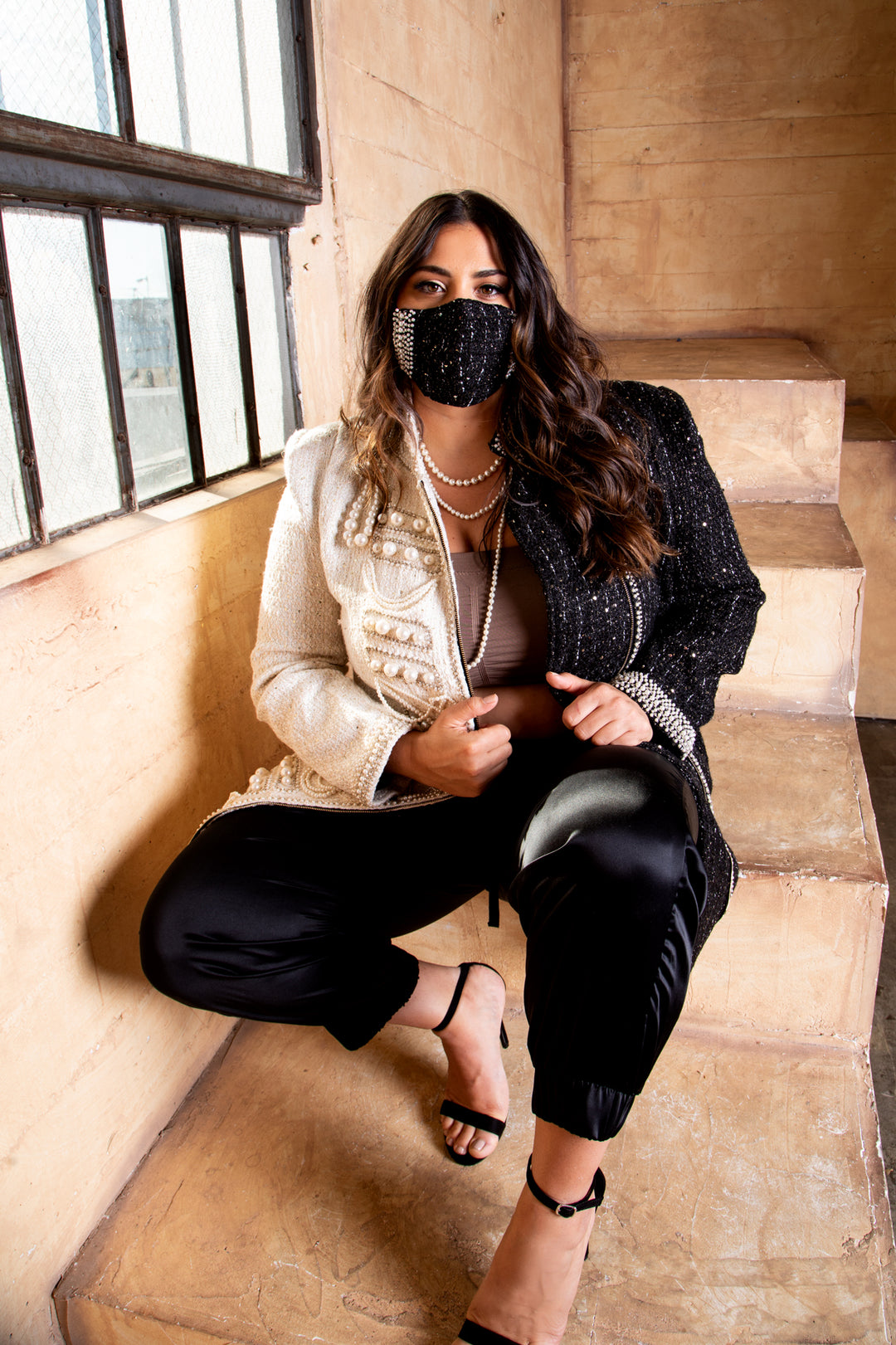Big, Black, and Beautiful
Big, Beautiful, and Black
Sisters have long fought for size acceptance. So why, since #bodypositivity became bankable, has it centered white women?
Black women have been leaders in the movement against fat phobia for decades. But you wouldn’t necessarily know it from a quick glance at the top pictures and videos on Instagram marked #bodypositivity.
“There are few things that bother me or get under my skin more than seeing white women on Instagram, and they hashtag their pictures ‘bodypositivity’ but they’re pinching their one little piece of fat,” says author and pop culture critic Evette Dionne, who describes herself as fat and says she has been since she was 9 years old. “There’s no need to do that in a culture that still idolizes whiteness and that still idolizes thinness.”
Writer Bethany Rutter once declared, “The greatest trick the devil ever pulled was snatching body positivity out of the hands of fat women and then convincing them it was never theirs in the first place.” Along the way, the body positivity movement seems to have been snatched from the hands of Black women, too.
The push to dismantle the stigma against fat bodies started in the 1960s, growing alongside the women’s liberation and Black civil rights movements. But it wasn’t until around 2016 that it seemed to go mainstream — with white, hour-glass-shaped women at the forefront.
That year, Mattel created a Barbie in the image of plus-size model Ashley Graham, who designed a swimsuit line and became the first plus-size Sports Illustrated swimsuit issue cover model. The following year, Graham graced the cover of Vogue. Social and market pressures forced the fashion industry to be more inclusive of larger bodies; roughly 70 percent of women in the U.S. wear a size 14 or larger.
Strings argues that a demonization of fatness grew from the rise of the transatlantic slave trade and the spread of Protestantism. “Racial scientific rhetoric about slavery linked fatness to ‘greedy’ Africans. And religious discourse suggested that overeating was ungodly,” Strings writes. “In the United States, fatness became stigmatized as both Black and sinful.”
White writers like Kelsey Miller have also gotten a lot of attention through the body positivity movement. Miller launched the Anti-Diet Project at the popular millennial lifestyle website Refinery29 in 2013 and soon landed a national television appearance, an agent and a book deal. But in a 2020 retrospective article she wrote, “And while I often liked to point out that body positivity was for everyone, I became ever more aware that it was mostly women like me who benefited from it.” She also acknowledges that size discrimination doesn’t look the same for everyone.
“When a white person — especially a white, able-bodied, upper-middle-class, straight, cisgender person with a job at a fancy website — is marginalized by fatphobia, they are also protected from the worst of it by a thick cushion of privilege,” Miller writes.
Black women have done plenty to advance representation. Fashion blogger and “OG fat girl” with over 866,000 Insta followers, Gabi Gregg, has sold a line of size-inclusive swimwear since 2013 and has a plus-size lingerie line. Many credit Rihanna’s Savage X Fenty line, which has featured trans, disabled and plus-size women in its advertisements and shows, with forcing Victoria’s Secret to rebrand to celebrate a more diverse idea of beauty. Jessamyn Stanley has been a leader in making yoga more inclusive. Actress Octavia Spencer was speaking out against our weight-obsessed culture in 2012. And many other sisters, including singer Lizzo and writer Roxane Gay, are helping to shape the conversation about body acceptance.
Yet some thought leaders believe body positivity has been co-opted by white women, even those who are relatively thin. And Dionne, who is the former editor in chief of Bitch Media and writes extensively about the intersections of race, gender and size, believes the body positivity movement has deeper problems.
“Body positivity has really morphed to focus on individualism and how people feel about their bodies and that has diluted the work that Black women have been doing for decades,” she says. “Black women were really at the forefront of pushing for legislation around ending fatphobia in our systems — in workplaces, in doctors’ offices.”
Furthermore, like countless popular movements, body positivity has been commercialized. Brands attempt to exploit the movement in part by using plus-size models in advertising campaigns or through partnerships with body-positive Instagram influencers. Dionne doesn’t deny that size-inclusivity in fashion and media is important. “To be able to dress myself the way I please, to feel like I’m represented on screen and in magazines,” she says, “it is a confidence boost. It does give fat people a sense of dignity.”
But that confidence boost is just a piece of the puzzle. Dionne believes the mainstreamed movement has also failed to recognize that racism is at the root of fatphobia. Sabrina Strings, Ph.D., an associate professor of sociology at UC Irvine, explores this concept in her book Fearing the Black Body: The Racial Origins of Fat Phobia.
Strings argues that a demonization of fatness grew from the rise of the transatlantic slave trade and the spread of Protestantism. “Racial scientific rhetoric about slavery linked fatness to ‘greedy’ Africans. And religious discourse suggested that overeating was ungodly,” Strings writes. “In the United States, fatness became stigmatized as both Black and sinful.”
Now, when roughly 40 percent of non-Hispanic white women over 20 are obese (up from nearly 23 percent in 1994), they certainly have a stake in destigmatizing fatness. Still, an effective body positivity movement must center issues of structural racism.
While health thought leaders are quick to point out that African American women have the highest rates of obesity or being overweight (about 4 out of 5 African American women are overweight or obese), many don’t acknowledge that obesity could be a manifestation of systemic racism. Black people are more likely to live in areas where more unhealthy food is sold. Chronic stress caused by racism can increase the severity of obesity. Also, Black people are less likely to receive proper medical care to help control their weight.
What’s more, the body positivity movement must consider gender, ability and age. “A fat trans person is going to experience discrimination and fatphobia differently than a white cisgender straight fat woman,” Dionne says.
Rutter writes that the movement was meant to “scoop up all the people whose bodies our culture otherwise rejects,” which included “bodies that weren’t thin and white and cisgender and functioning at 100 percent.” And that includes aging bodies. “If more jobs adopted policies that prohibit ageism … it would not only make you feel [valued]…, but it would also [fight] discrimination,” Dionne said.
A body positivity movement that truly uplifts Black women — and everyone else — must do more than make us feel good about our bodies. It must dismantle structures that made us feel bad about our bodies in the first place.
Sisters get it. “Black women tend to think collectively about movement-building, so it’s not just about us individually and the way we feel about our bodies,” Dionne says. “It’s about trying to change systems to make them more accepting.”










Laissez un commentaire